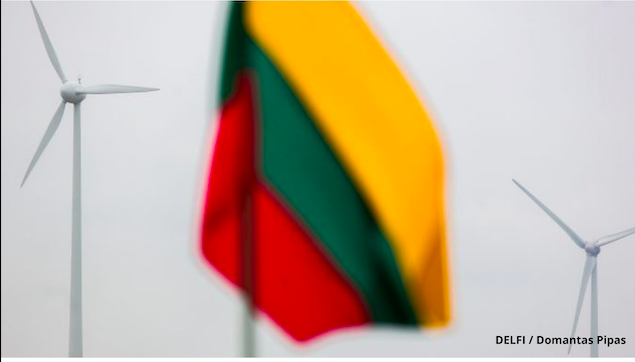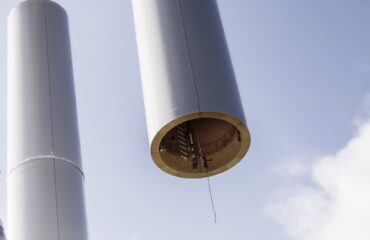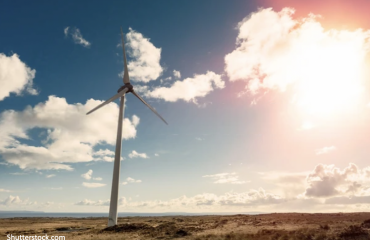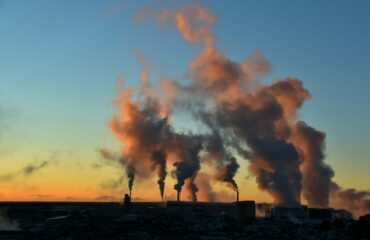
Overview of the Baltic Energy Landscape
Renewable energies in the Baltic region is oftentimes overlooked by international investments, but the outstanding performance of the market in the past two years, is generating more interest. Rytis Kėvelaitis is the advisor for renewable energy project development in the Baltics and he introduces us to the energy market of the Baltic region.
Economic Resilience and Green Ambitions
The Baltic states – Lithuania, Latvia, and Estonia – forms the region next to Scandinavia with a total population of 6 million people. These three states were once called “the Baltic tigers” due to their rapid economic growth after their accession to the EU in 2004.
In fact, all three Baltic countries’ economies have started to roar again by showing exceptional economic resilience in the COVID-19 times – Lithuania’s GDP is already in the higher level than in Q1-2020. For 2021, GDP growth is expected to be at 3.1% in Lithuania, 3.9% in Latvia, and 3.4% in Estonia by the IMF. In addition, all three countries possess > International credit ratings and are the part of Eurozone.
Besides a strong economic outlook, there is a considerate focus on green economy and renewable electricity development in particular. In their national energy and climate plans (NECPs) in 2020, all three countries aim for a significantly higher renewable energy target, than the minimum 32% share of renewable energy target by the EU.
Renewable Energy Targets
Lithuania plans to increase renewable energy share in the total energy mix from 23% in 2020 to 45% in 2030. At the same time, Latvia aims to go from 40% to 50%, and Estonia plans to further decarbonize its energy sector from 25% to 42% of renewable energy share. This brings the Baltic states among the most ambitious countries for renewable energy development – Lithuania’s target to almost double renewable energy share from 23% to 45% during the next decade is only surpassed by the Danish ambition to increase renewable energy share from 30% to 55%.
Interconnectivity and Market Potential
The region is already highly interconnected with neighboring markets due to the electricity links to Poland (500MW); Sweden (700MW) and Finland (1000MW). Besides the physical interconnections, all three Baltic energy markets have been a part of the Nord Pool power trading market since 2013.
The Baltic region has the greatest potential in capacity and levelized cost of energy (LCOE) in wind energy. To meet their targets in the NECP, the three countries have the market potential of 3.2 GW in the next decade – 1.4 GW in Lithuania; 1 GW in Latvia; 0.8 GW in Estonia.
Offshore and Onshore Wind Development
It is expected that 1.7 GW of this capacity will be tendered in centralized offshore wind tenders in Lithuania, as well as a joint tender by Latvia and Estonia. Lithuania aims for a 700 MW offshore wind tender in Q3 2023, with a two-sided contract for a difference (CfD) revenue stabilization mechanism. The joint tender of Latvia and Estonia contains 1000 MW for the ELWIND project in 2025 with more information & details to be revealed in the coming years. Besides that, there are 13 GW of greenfield applications by 6 different developers in Estonian waters for offshore wind development.
A sliding market premium mechanism was introduced in Lithuania and Estonia in 2019, but there are also several projects being developed on the merchant base. In 2020-2021, the first 10-year PPAs were signed between onshore wind developers in Lithuania (E-Energija and European Energy) and an off-taker (state-owned utility Eesti Energia) with a total onshore wind production capacity of 220 MW. According to the Estonian auction pipeline, there will be an auction for 450 GWh annual production (or approx. 170 MW capacity) in 2021 and a 650 GWh annual production (or approx. 250 MW capacity) auction in 2023. To sum up, it is expected that 1.2 GW of onshore wind will be installed in the Baltics in the next decade, but this number might be underestimated.
Solar Energy Growth
While there are not yet any utility-scale (>10 MW) solar parks in the Baltics, there is a vibrant self-consumption market in Lithuania. In 2020, the installed PV capacity increased by 80%, reaching up to 160 MW. On top of this, the new government voted in December 2020 on the agreement that foresees up to 1 GW of installed self-consumption PV capacity until 2025. And while the Estonian NECP targets just over 400 MW of PV capacity in 2030, the market potential in the Baltics is significantly higher due to the increasing daytime electricity market price, as well as for the price reduction in PV installations in the upcoming years.
Infrastructure Development and Synchronization
Besides the ambitious plan to increase local electricity production by renewables, the other major reform in the energy sector is to synchronize the Baltic State electricity grid with continental Europe networks and de-synchronize from the Russian IPS/UPS electricity system by 2025. This is a joint project by Lithuanian, Latvian, and Estonian transmission system operators (TSO) with an investment size of 1.4 billion € to build new and expand existing interconnectors to Poland, develop new 330 kV and 110 kV lines internally as well as install synchronous condensers to ensure grid stability and security of supply.
Investment Potential
To sum up, the Baltic renewable energy market is often an overlooked region for investments due to its small smize, but it offers great potential due to its rapidly growing economy, stable investment environment, electricity market integration, and ambitious renewable energy targets.
Rytis Kėvelaitis is the advisor for renewable energy project development in the Baltics. He is the former Vice Minister of energy of Lithuania
Empowering Renewable Energy Developers with Green Dealflow
If you feel tired of the lengthy process of finding investors for your renewable energy projects, we’ve got a solution. Our specialized service matches you with professional investors and off-takers swiftly. With over a decade of experience and a close network in the renewable energy sector, we significantly reduce your transaction time by matching you with ideal investors who meet your criteria. Let’s unlock the full potential of your renewable energy projects.


